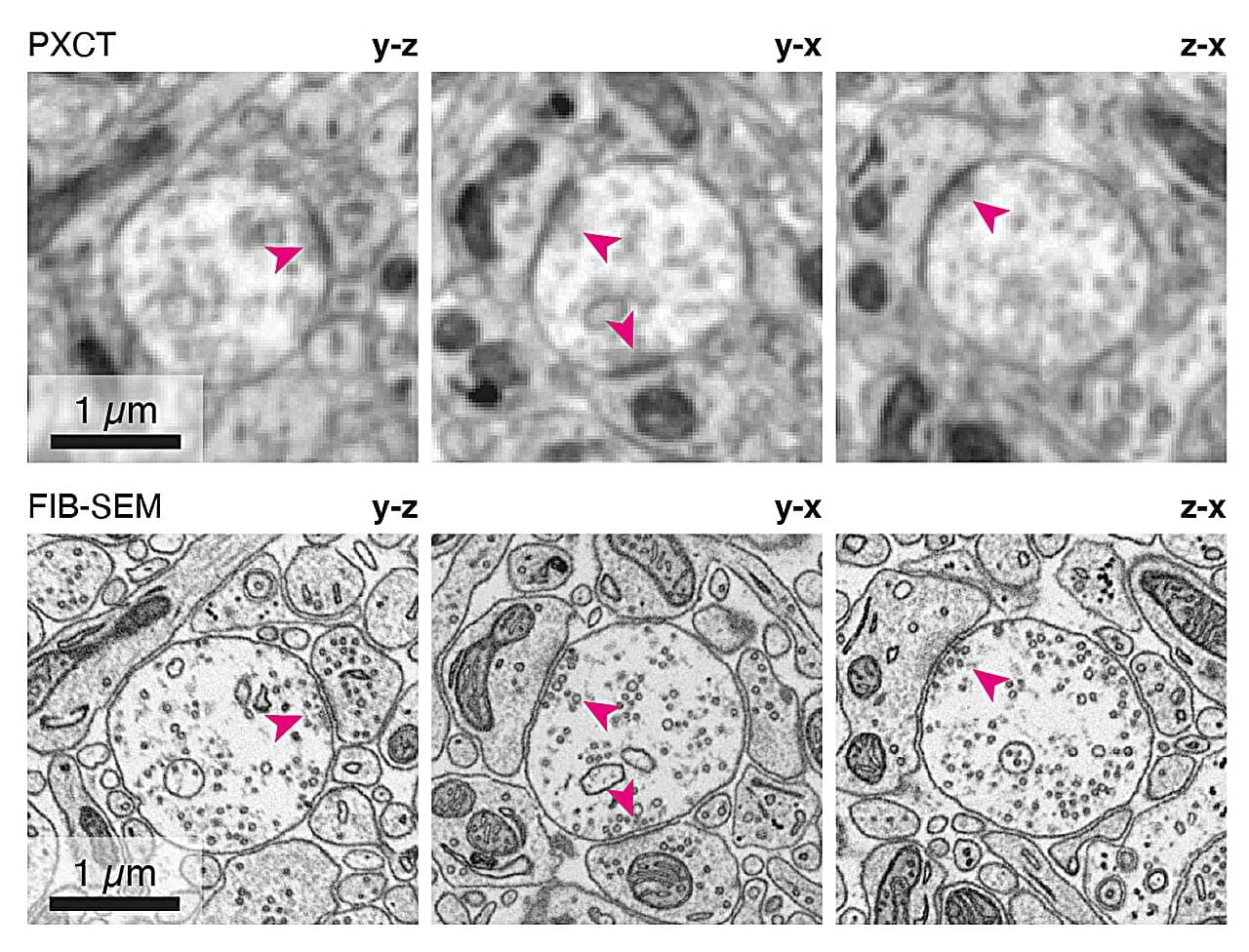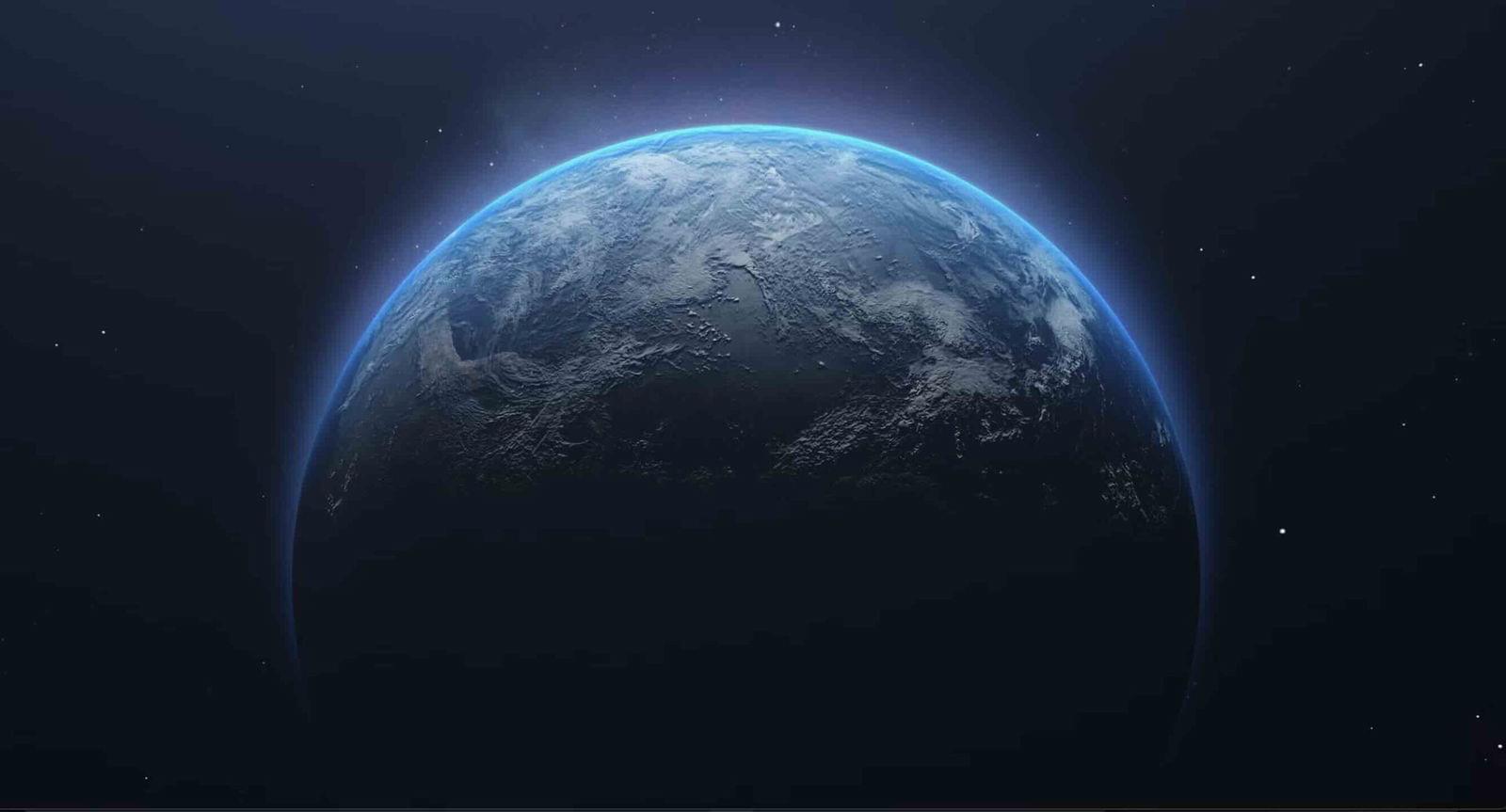The effect, first predicted over 60 years ago and regarding objects traveling near the speed of light, has been lent support by a twisted experiment.
Get the latest international news and world events from around the world.

X-ray imaging captures the brain’s intricate connections
An international team of researchers led by the Francis Crick Institute, working with the Paul Scherrer Institute, has developed a new imaging protocol to capture mouse brain cell connections in precise detail. In work published in Nature Methods, they combined the use of X-rays with radiation-resistant materials sourced from the aerospace industry.
The images acquired using this technique allowed the team to see how nerve cells connect in the mouse brain, without needing to thinly slice biological tissue samples.
Volume electron microscopy (volume EM) has been the gold standard for imaging how nerve cells connect as ‘“circuitry” inside the brain. It has paved the way for scientists to create maps called connectomes, of entire brains, first in fruit fly larvae and then the adult fruit fly. This imaging involves cutting 10s of nm thin slices (tens of thousands per mm of tissue), imaging each slice and then building the images back into their 3D structure.


DNA transcription is a tightly choreographed event: How RNA polymerase II regulates the dance
Life’s instructions are written in DNA, but it is the enzyme RNA polymerase II (Pol II) that reads the script, transcribing RNA in eukaryotic cells and eventually giving rise to proteins. Scientists know that Pol II must advance down the gene in perfect sync with other biological processes; aberrations in the movement of this enzyme have been linked to cancer and aging. But technical hurdles prevented them from precisely determining how this important molecular machine moves along DNA, and what governs its pauses and accelerations.
A new study fills in many of those knowledge gaps. In a paper published in Nature Structural & Molecular Biology, researchers used a single-molecule platform to watch individual mammalian transcription complexes in action. The result is a clear view of how this molecular engine accelerates, pauses, and shifts gears as it transcribes genetic information.
“What’s really striking is how this machine functions almost like a finely tuned automobile,” says Shixin Liu, head of the Laboratory of Nanoscale Biophysics and Biochemistry. “It has the equivalent of multiple gears, or speed modes, each controlled by the binding of different regulatory proteins. We figured out, for the first time, how each gear is controlled.”

Rare Earth Element Crystals Found Forming in a Plant For The First Time
Scientists have just discovered an incredible superpower hidden away in the tissues of the fern Blechnum orientale, a plant that can collect and store rare earth elements.
The findings could lead to a more sustainable way of gathering mineral resources that we are increasingly reliant upon.
There are 17 rare earth elements in total, and these metallic materials are now deeply embedded in all kinds of tech – from wind turbines and computers, to broadband cables and medical instruments. They’re not actually that rare, but they are difficult and expensive to extract from the Earth’s crust in a useful form.

Physicists Discover Brand-New Isotopes of Heavy Rare-Earth Elements
Never-before-seen ratios of particles making up atomic nuclei have emerged in a landmark experiment involving the fragmentation of heavy elements.
By breaking apart the nuclei of platinum, physicists led by Oleg Tarasov of Michigan State University have discovered new isotopes of rare-Earth elements thulium, ytterbium, and lutetium. It’s an achievement that scientists believe will help them understand the properties of neutron-rich nuclei and the processes that forge new elements in the collision of neutron stars.
The work, the researchers say, also demonstrates the power of Michigan State University’s recently completed Facility for Rare Isotope Beams (FRIB), which conducted its first experiment in June 2022.




Where are all the trillion dollar biotechs?
Of the many trends people chase in biotech, the only one that proves sure and consistent is declining returns. Even after adjusting for inflation, the number of new drugs approved per $1 billion of R&D spending has halved approximately every nine years since 1950. Deloitte’s forecast R&D IRR for the top 20 pharmas fell below the industry’s cost of capital (~7–8%) between 2019 and 2022. In other words, while the industry remained profitable overall, the incremental economics of R&D investment were value-eroding rather than value-creating. So, while other industries have a reason to treat the current market downturn as transient, the business of developing medicine has a more fundamental problem to deal with — it is quite literally shrinking out of existence.